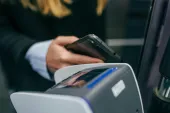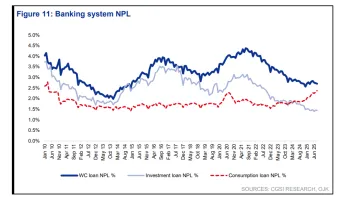Reshaping fraud detection in Asian finance with knowledge graphs
By Kris PayneFinancial fraud has evolved into a sophisticated threat, growing in both scale and economic impact.
Businesses are increasingly feeling the pinch, with 2023 seeing global financial fraud schemes account for over US$485.6 billion in losses. In Singapore alone, an average of US$3.52 dollars in hidden costs are incurred for every dollar lost to fraud, encompassing legal fees, recovery expenses, and internal labor.
Given the immense complexity of modern financial fraud, even marginal improvements in fraud detection accuracy can generate significant cost savings for businesses in Asia. While there is no shortage of cybersecurity tools available for businesses to detect fraud, these tools are proving inadequate at keeping up with today’s hyper-connected world. The limitations of traditional fraud detection methods stem from their reliance on rigid data frameworks, which fail to capture the complex networks fraudsters operate in.
Enhancing fraud detection with graph technology
Analyzing these vast networks demands significant time and expertise, and such resources are scarce when organizations need to make split-second decisions in financial fraud cases.
Enter knowledge graphs, a proven technology for speed and accuracy in uncovering patterns and relationships between data. They were instrumental in the Panama Papers, analyzing 11.9 million documents that enabled journalists to uncover connections between entities and their offshore activities – a task that would have otherwise taken years. As business processes become quicker and more automated, the window for detecting fraud is shrinking, creating an urgent need for fast, real-time solutions.
Knowledge graphs are transforming how businesses approach fraud detection - just like a treasure map with all the hidden paths illustrated, knowledge graphs illuminate the hidden connections between fraudsters. According to Gartner, by 2025, 60% of financial institutions will adopt graph analytics as a core component of their fraud detection systems. Through the use of graph technology, financial institutions can uncover connections to known fraud patterns, enabling them to detect and respond to fraud more proactively, ultimately protecting both customers and business integrity.
Building the foundation for effective fraud detection
While knowledge graphs are powerful, their accuracy depends on the quality of the underlying data. Typically, data exists in silos within organizations, and businesses need to invest time and resources in ensuring that they have the right data to work with in the first place. By mapping relationships in a knowledge graph, organizations can bridge these silos and identify duplicate or redundant data easily. This connectivity creates a master record or "golden record" for each entity. The advent of graph algorithms also enhances these capabilities by identifying duplicates based on similarity scores, common patterns, and connection paths, reducing errors and inconsistencies.
Unlocking data from traditional silos and adopting graph databases is a significant shift that requires a mindset change. Businesses must embrace the idea that interconnected data is crucial for identifying complex fraud patterns and preventing future attacks. Continuous monitoring of data, paired with machine learning algorithms, allows for real-time alerts and early detection of fraud rings.
As the financial landscape in Asia becomes more interconnected and data-driven, the role of knowledge graphs in combating fraud cannot be overstated. With their ability to map and analyze complex relationships, knowledge graphs not only detect fraud but also predict and prevent it.
The question for businesses isn't just whether they are ready for this shift but how they can leverage such innovations to drive broader operational resilience. Looking to the future, it’s worth considering how technologies like knowledge graphs could reshape the way we approach security and risk—paving the way for a more informed, adaptive, and agile response to financial crime.




















 Advertise
Advertise






